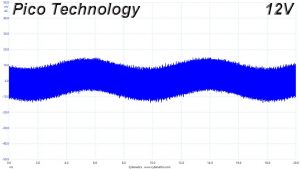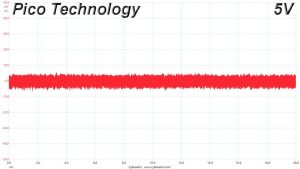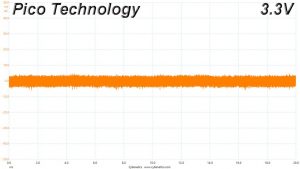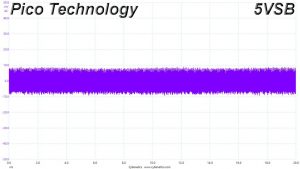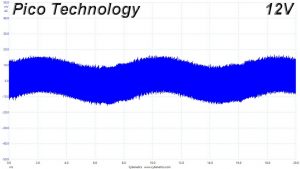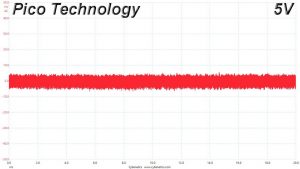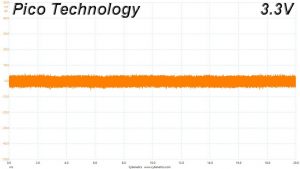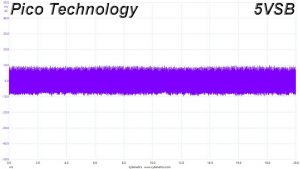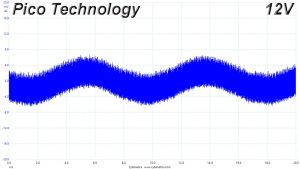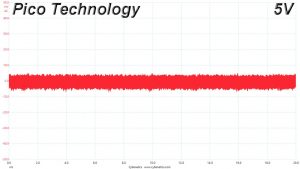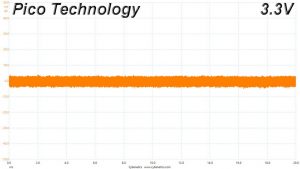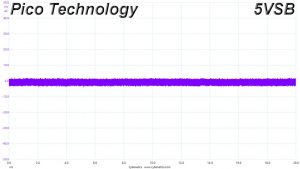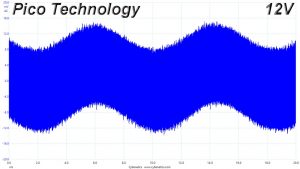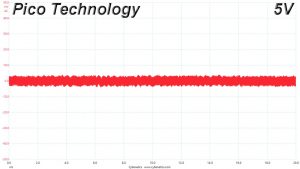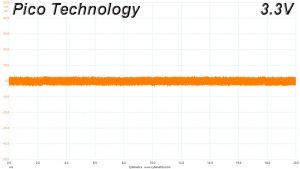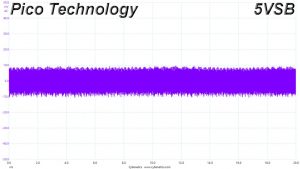To learn how we measure ripple, please click here.
The following table includes the ripple levels we measured on the rails of the SF600 Platinum. The limits, according to the ATX specification, are 120mV (+12V) and 50mV (5V, 3.3V, and 5VSB).
| Test | 12V | 5V | 3.3V | 5VSB | Pass/Fail |
| 10% Load | 6.2 mV | 5.8 mV | 4.2 mV | 10.0 mV | Pass |
| 20% Load | 9.9 mV | 6.6 mV | 4.9 mV | 12.1 mV | Pass |
| 30% Load | 12.5 mV | 7.0 mV | 5.5 mV | 12.8 mV | Pass |
| 40% Load | 15.2 mV | 7.4 mV | 5.9 mV | 12.6 mV | Pass |
| 50% Load | 19.4 mV | 8.6 mV | 7.1 mV | 12.7 mV | Pass |
| 60% Load | 23.9 mV | 9.4 mV | 7.9 mV | 13.7 mV | Pass |
| 70% Load | 22.5 mV | 9.9 mV | 8.2 mV | 13.7 mV | Pass |
| 80% Load | 25.2 mV | 10.8 mV | 9.2 mV | 15.5 mV | Pass |
| 90% Load | 27.1 mV | 11.3 mV | 9.9 mV | 17.1 mV | Pass |
| 100% Load | 31.2 mV | 12.7 mV | 11.4 mV | 19.1 mV | Pass |
| 110% Load | 33.5 mV | 13.4 mV | 11.5 mV | 20.7 mV | Pass |
| Crossload 1 | 13.5 mV | 12.9 mV | 10.9 mV | 6.3 mV | Pass |
| Crossload 2 | 30.2 mV | 9.1 mV | 7.4 mV | 21.0 mV | Pass |
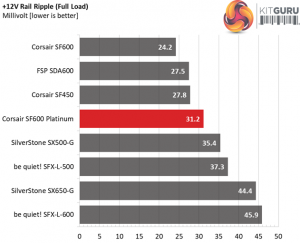
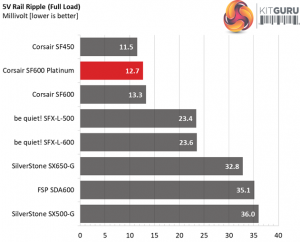
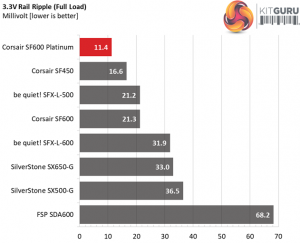
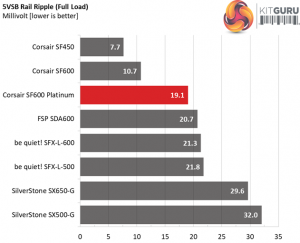
The SFX form factor doesn't provide enough space for a large number of filtering caps in the secondary side, so you should not expect to see the jaw-dropping results that some of the ATX units achieve. Nonetheless, the SF600 Platinum registers a very good overall performance. We would be fully satisfied though if ripple at +12V was close to 25mV, in the worst case scenario.
Ripple Oscilloscope Screenshots
The following oscilloscope screenshots illustrate the AC ripple and noise registered on the main rails (+12V, 5V, 3.3V and 5VSB). The bigger the fluctuations on the screen, the bigger the ripple/noise. We set 0.01 V/Div (each vertical division/box equals 0.01V) as the standard for all measurements.
 KitGuru KitGuru.net – Tech News | Hardware News | Hardware Reviews | IOS | Mobile | Gaming | Graphics Cards
KitGuru KitGuru.net – Tech News | Hardware News | Hardware Reviews | IOS | Mobile | Gaming | Graphics Cards


